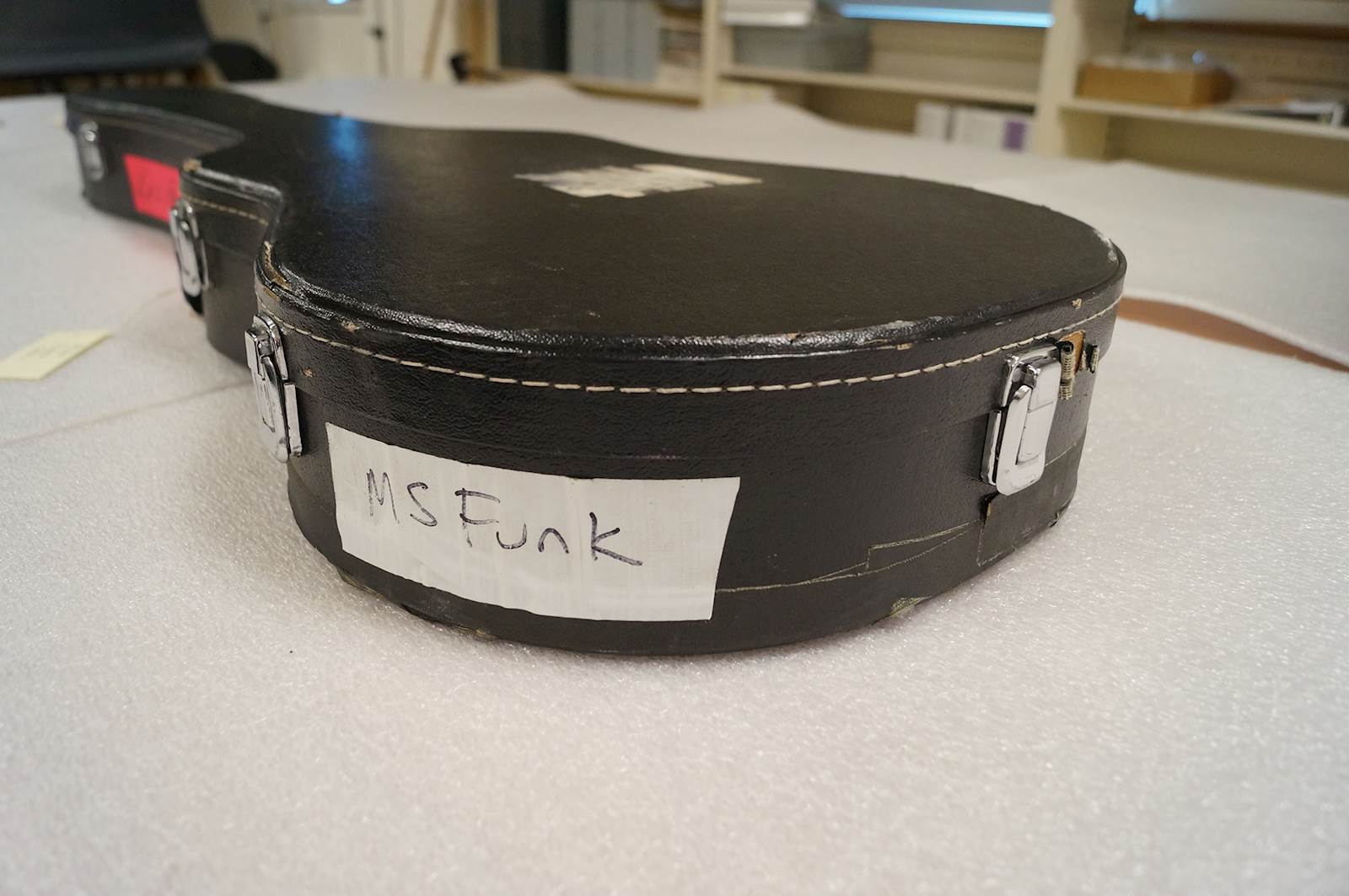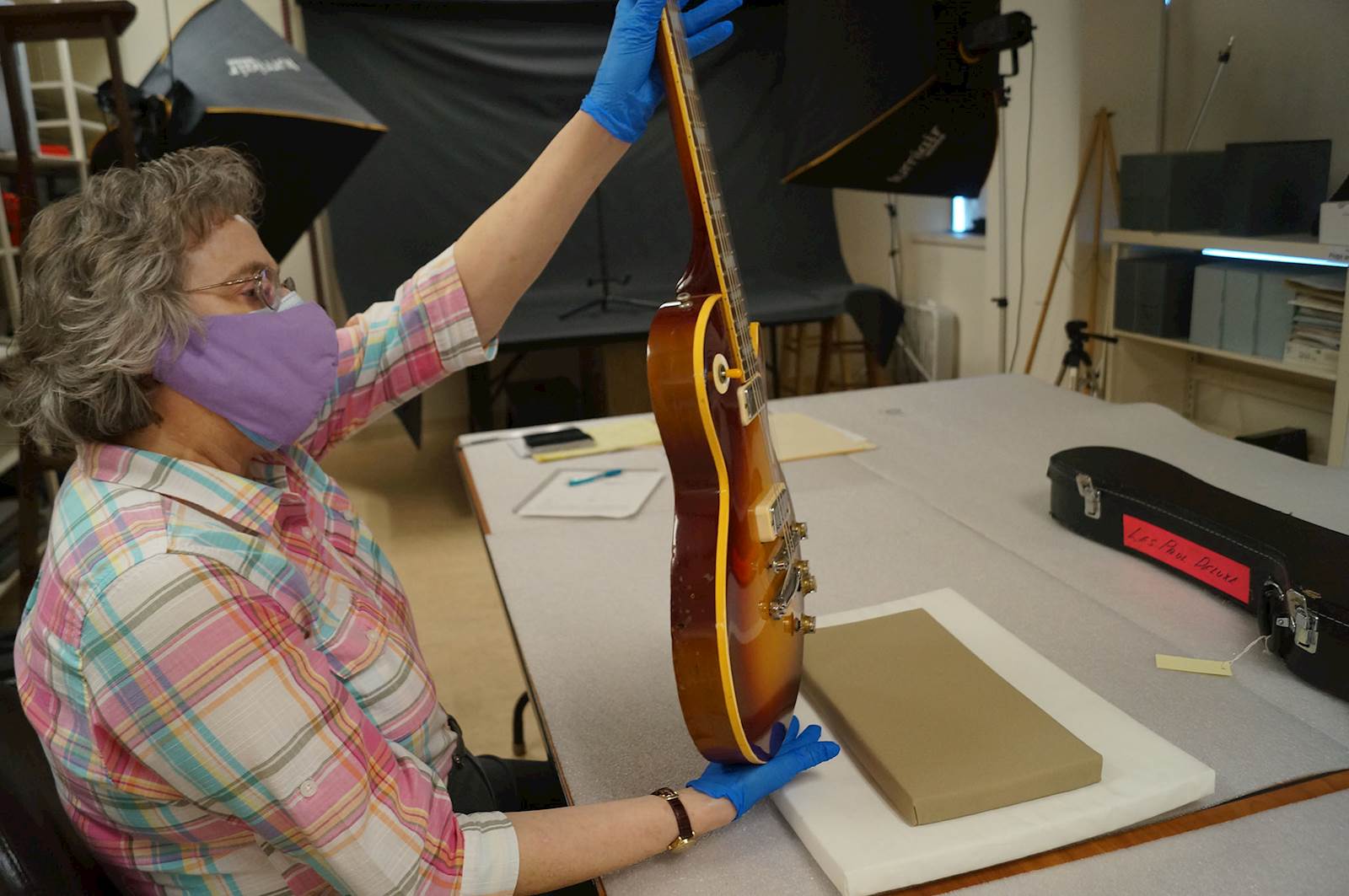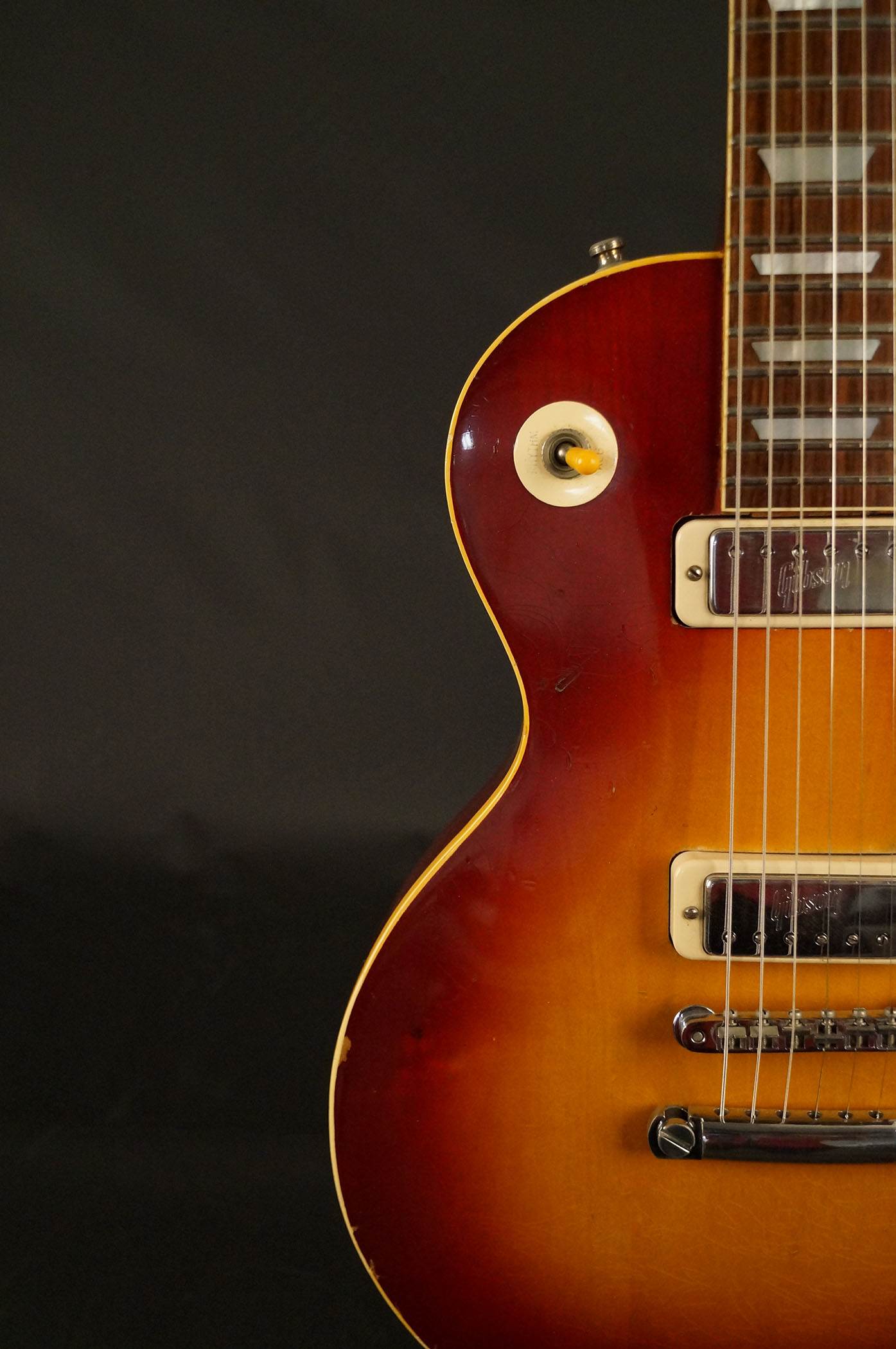By Carla Smith
Exhibit planning and preparation is never boring. Teamwork is required at various points for even the most behind-the-scenes tasks, loan paperwork and prep. Often these tasks can be busy, varied, and exciting.
One of the interesting things about loans is that you have, at least by email or phone, the opportunity to “meet” a variety of people from different occupations, locations, and associations with the objects. The ALPLM's upcoming exhibit, The State of Sound: A World of Music from Illinois, is a prime example. We contacted artists, their families, and/or representatives, along with publishers, organizers, or collectors. With 58 loans of around 125 items, this exhibit sets the record for ALPLM exhibit loans – not to mention the number of contacts made.
Tasks such as loan paperwork take the most time. However, one really knows that the loan is “for real” when it is time to arrange the shipping, pickup dates, or deliveries. We have used a variety of methods with this exhibit. It is always exciting to receive boxes or crates and anticipate what treasures hide within.
 Documenting a guitar case loaned by Tommy Shaw of Styx as it is opened
Documenting a guitar case loaned by Tommy Shaw of Styx as it is opened
After a 24-hour climate adjustment, the package is opened and the fun of discovery begins. The conservator and registrar work closely together on documenting the unpacking and the condition of the objects, as well as taking “formal portraits” of the objects. In fact, Bonnie Parr, the conservator, is my hero.
As the planning progresses, the exhibits designer, the registrar, and conservator meet at various times to discuss how the different objects could or should be displayed. The team members have a long history of working on these tasks for both special exhibits and regular rotation of artifacts. Each has something to bring to the table and each may have some assignment for making all or part of the mount on which an object will be displayed. For example, the conservator creates items that support documents, published materials, or photographs. The registrar will work on items that need padding or softer surfaces. The exhibits designer works on all types of mounts.
 Conservator Bonnie Parr checking the condition of a guitar owned by Tommy Shaw of Styx
Conservator Bonnie Parr checking the condition of a guitar owned by Tommy Shaw of Styx
The loaned items are kept in a secure space until it is time to install into the exhibit. When installation begins, there is a plan and methodical installation to keep all items safe. The registrar keeps track of the items and once the exhibit is installed will photograph the cases and other areas to document the exhibit. Photos are sent to the lenders.
At the end of the exhibit, the process goes in reverse, except that there is not another "formal portrait." Documentary photos will be taken, condition checked, and items will be repacked using the photographs taken upon receipt. All will be returned to lenders ... and we'll sigh in relief when we get confirmation an object is back with its owner.
 Formal portrait of the guitar of Tommy Shaw of Styx
Formal portrait of the guitar of Tommy Shaw of Styx
Carla Smith is the registrar at the Abraham Lincoln Presidential Library and Museum.